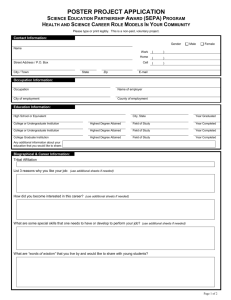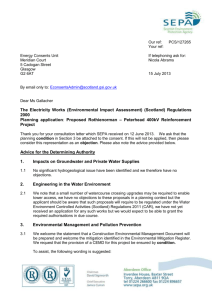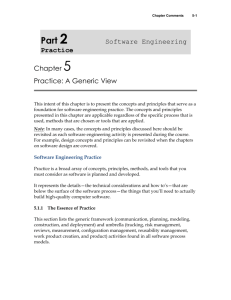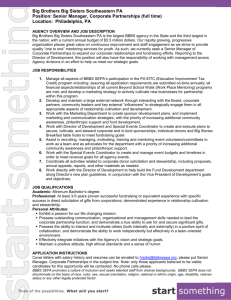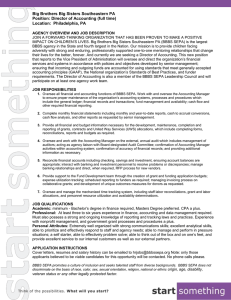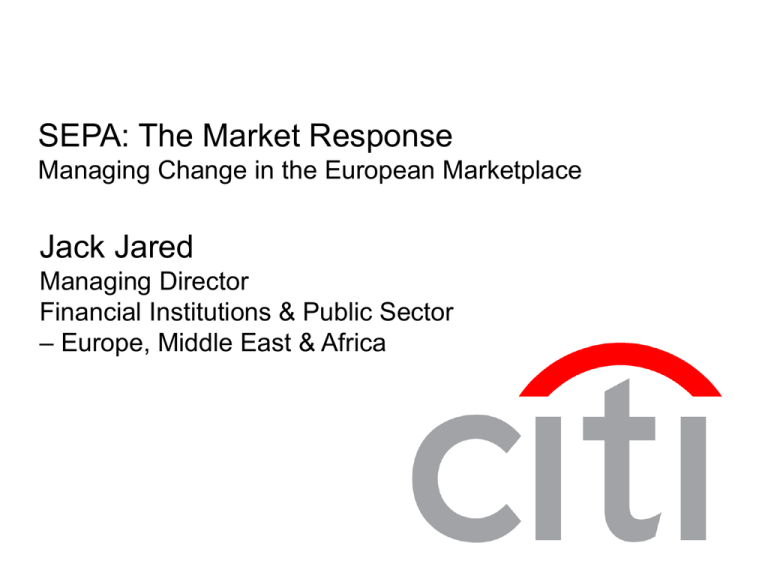
SEPA: The Market Response
Managing Change in the European Marketplace
Jack Jared
Managing Director
Financial Institutions & Public Sector
– Europe, Middle East & Africa
Citi – A Key Player in Europe
Citi Presence Country
Non-Presence Country
2
European Banking – The Need for Change
Financial services have not grown faster than GDP in Europe
Financial services sector value added as % of GDP
10
US
8
6
EU
4
2
1982
1992
2002
1982
2002
US
4.7
9.1
EU
3.7
4.9
Italy
3.1
6.1
NV
4.8
6.0
UK
4.2
5.3
Belgium
4.9
5.1
Spain
2.9
5.1
France
3.4
4.6
Germany
4.0
4.2
Scandinavia
2.3
3.2
3
Environmental drivers of the banking industry
Market drivers increase the challenges faced by European banks
Market Drivers
Geopolitical volatility
Investor confidence
Challenges
Unsteady economic
growth
Increased
competition
Protect shareholder
value
Global participation
Margin erosion
Greater client
mobility
Operating cost
constraints
Regulation
Customer loyalty
– SEPA
Increasing IT burden
– MiFID
Increased Competition
– Basel II
Capital efficiency
Impact
Need to respond
to regulator
pressure
Reduction of
discretionary
expense
Need for
enhanced product
set
Global distribution
4
Regulation: The Catalyst for Change
SEPA
Efficiency
Harmonisation Competition
Regulatory Pressure Across the Product Lines
5
Market Forces Go Beyond Just Regulation…..
Technology Innovation
•
•
•
•
Paper to e-channels
Email: pc to blackberry
Mobile phones: SMS to GPRS
Info security & integrity
Consumer Expectations
•
•
•
•
Corporate
Banks & Infrastructures
are UNDER PRESSURE
to change
Immediacy, mobility
Convenience, simplicity
Visibility and control
Value – ‘more for less’
•
•
•
•
Operating efficiency
Globalisation of trade
Technology infrastructure
Regulatory compliance
Regulatory Impetus
•
•
•
•
Common language
Transparency
Governance
Safety, robustness
6
SEPA Defined
“SEPA will be the area where citizens, companies and other
economic actors will be able to make and receive payments in euro
within Europe, whether between or within national boundaries under
the same basic conditions, rights and obligations, regardless of their
location.”
(Source: European Payments Council Roadmap, December 2004)
7
SEPA: What Will It Deliver?
Eliminate the Concept of Cross Border Payments
• Enable free flow of capital across national borders through:
–
–
–
–
–
–
Standard payment products
Regional payment infrastructures
Single Legal Framework (Payment Services Directive)
Harmonised central bank reporting
Standards like BIC & IBAN
New messaging standards (XML)
• Make “Single Service Point” a reality
• Reduce cost to end-users of moving capital
i
Fast Facts
Facts
iSEPA
• Dedicated
SEPA includes
the 27Service
EU Member
3
Customer
Team States,
ensuresthe
timely
European Economic
Area
states
(Iceland, Norway
information
flow to each
DWP
User.
& Liechtenstein) and Switzerland.
• The European Payments Council was set up as
the body representing the European banking
industry and the channel between the industry and
the Commission. The EPC is tasked with delivering
the SEPA vision.
• The EPC was initially mandated to deliver full
SEPA migration by 2010.
• The Commission are now aiming for “…a critical
mass of volumes to be migrated by 2010 such that
SEPA will be irreversible.”
• Facilitate greater integration of the single European marketplace
– Goods, services, capital & citizens
– Efficient capital flows as a prerequisite for efficient flows of good, services & citizens
“Payments are the oil in the wheels of the Internal Market. It is of major importance that
those wheels run smoothly and safely.
(European Commission)
8
Challenges Along the Way
Current Inefficiencies and End Goal are Clear
UNCERTAINTY
Reachability
TODAY
• High Cost
• Inefficient Market
CBR
Mandates
Transition Period
SEPA
Adoption
Interchange
PSD
Compliance
• Many Infrastructures
Public Sector
Adherence
FUTURE
• Lower Cost
• Highly Efficient
• Common Infrastructure
• Different Products
• Simplified Products
• Lack of Competition
• Increased Competition
• Limited Bank/User Choice
• Choice for banks and
customers
“Co-opetition” as the key to progress in Europe
9
The Impact on European Banks
European Banks need to reconsider payments strategy
• Pressure on revenues
i
Fast Facts
Facts
iSEPA
• Investment in new products
• Dedicated
Quote fromCustomer
EuropeanService
Bank, “50%
our annual
Teamofensures
timely
technology budget
will beDWP
required
information
flow to each
User.to support
SEPA initiatives, but the SEPA project will reduce
our revenues by 30%”.
• SEPA attempts to remove national borders from a
payments perspective, but only 2% of transactions
within the EU cross a national border – 98% are
true domestic transactions through established,
efficient local clearing systems
• Investment in market infrastructure
• Identify and focus on core activities
• Longer term opportunities
Implications
-
Short-term impact: reduced revenues and higher investment costs
Future opportunity for lower processing costs and promotion of value-add services
Easier access to new markets and segments through harmonised infrastructure
“If all banks can become as efficient as the best institutions, margins could be
enhanced by €9billion” (McKinsey)
- SEPA: Huge Opportunity for those banks that get it right…?
10
SEPA: Compliance vs. Opportunity
COMPETITIVE
LANDSCAPE
“TOP 20” BANKS
ha
in
eC
re
ha
S
et
Differentiate as Market Leader
Maintain Premium Services & Pricing
Grow Revenue & Expand Market Share
Payback for Cost of Compliance
ark
&M
me
rV
alu
Value Add Services
Leverage Platforms
Target Financial Value Chain
Lead Clients into SEPA
Engage Industry
ility
Cu
sto
tab
ofi
Pr
OPPORTUNITY
MEDIUM BANKS
COMPLIANCE
Meet Requirements
Offer Instruments
Meet Industry Standards
React to Client Needs
No Differentiation
Revenue Attrition
Cost of Compliance
Market Share Risk
SMALL BANKS
11
SEPA: Keep the Real Goal in Sight
Core to the Future of Payments Business
Distraction / Mandatory regulatory change?
or
SEPA
Opportunity for growth and repositioning?
• Yes, SEPA is about market change
– New Products, Services, Capabilities and Infrastructures
• SEPA is also about a shift in business models and new opportunities
– Integrate SEPA products effectively into existing banking infrastructure
– Gain simplified access to customers in multiple markets through a common set of
products and standards
– Leverage standardisation offered by SEPA to maximise “business STP”
– Achieve greater centralisation, standardisation & efficiency
– Target new markets/segments to delivery business growth and reduce unit cost
– Build new operating model to meet your needs in the future European marketplace
12
Thoughts on Key Success Factors
Learning points from SEPA so far….
• Continue to build on successes to date
– The start of SEPA is not the end!
• Collaboration across the industry
– Find common solutions to common problems
– No small achievement gaining agreement between 9000+ banks
• Keep the users engaged – what are they looking for from SEPA?
– Where is the added value and the business case
• Use regulatory intervention as the enabler
– It can be a catalyst, not always risk / threat / barrier
– Let’s engage the regulators – our goals are aligned!
• Compliance is essential – “compliance only” is a risk
• Keep the goal in sight
– Not just about payments/collections.
– About a shift in business model and increasing the economic attractiveness of the region
13
(c) 2007 Citibank N.A. All rights reserved. Citi and Citi and Arc Design are trademarks and
service marks of Citigroup Inc. or its affiliates and are used and registered throughout the world.




